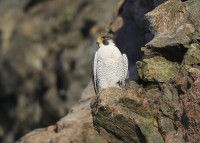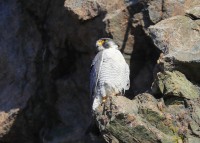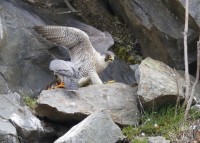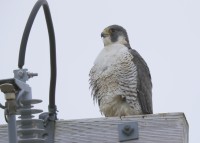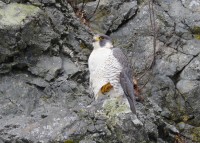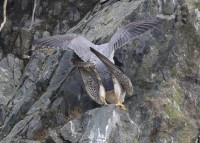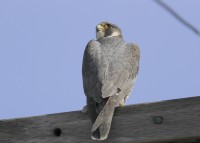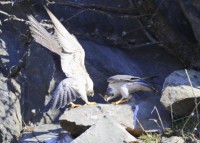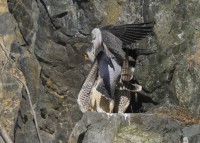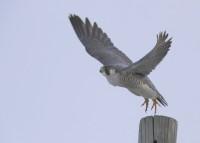Peregrine Falcons: Woburn, finally on eggs!
April 12, 2017 in Peregrine Falcon Woburn
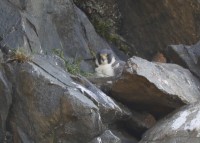 The Woburn Peregrines have finally laid their 2017 clutch of eggs! As with all Peregrine Falcons nest locations, clutch sizes vary from one to five. Three or four seems to be the norm. Eggs are laid at intervals of two to three days. Incubation usually does not start in earnest until the clutch is almost complete. The female typically does most of the incubating, and during this period is fed by the male. The incubation period is approximately 29 – 33 days. The young then spend up to six weeks in and around the nest ledge until they are old enough to make their first flight, or “fledge.”
The Woburn Peregrines have finally laid their 2017 clutch of eggs! As with all Peregrine Falcons nest locations, clutch sizes vary from one to five. Three or four seems to be the norm. Eggs are laid at intervals of two to three days. Incubation usually does not start in earnest until the clutch is almost complete. The female typically does most of the incubating, and during this period is fed by the male. The incubation period is approximately 29 – 33 days. The young then spend up to six weeks in and around the nest ledge until they are old enough to make their first flight, or “fledge.”
Here the female is finally hunkered down in incubation posture with the male nearby watching over the nearby area!
